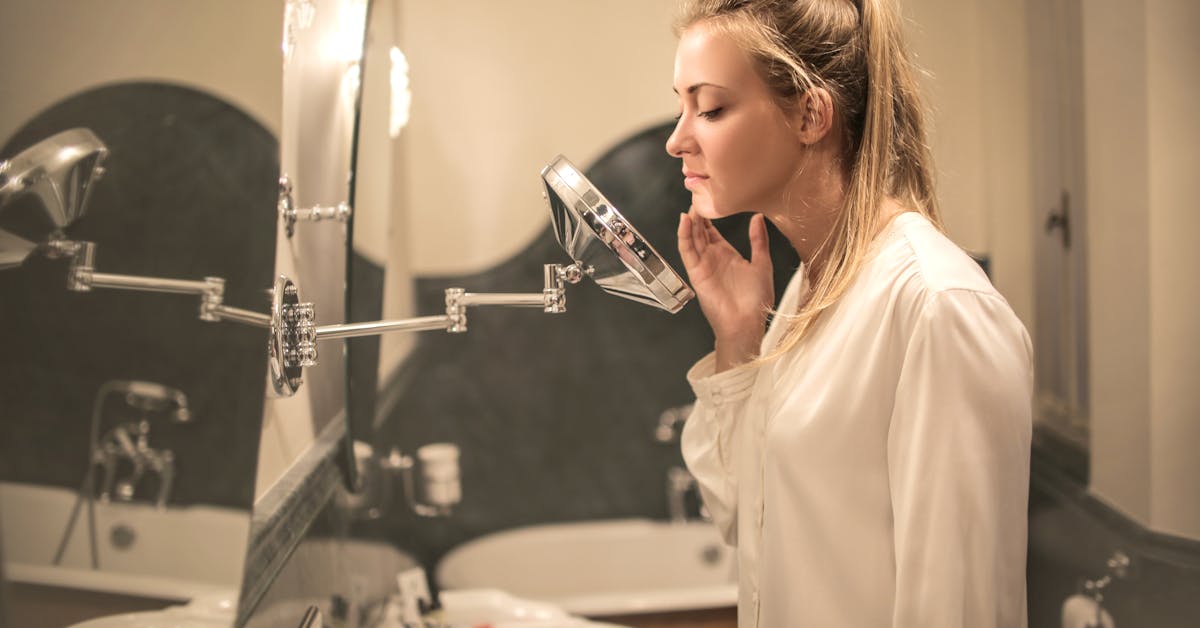Turmeric Face Mask: Benefits, Recipes, and Application
Introduction
Welcome to our blog post on turmeric face masks! If you’re looking for a natural and effective way to improve your skin’s health and appearance, turmeric might be the answer you’ve been searching for.
Turmeric, a vibrant yellow spice commonly used in cooking, has been used for centuries in Ayurvedic medicine for its numerous health benefits.
In recent years, it has gained popularity in the skincare industry for its potent properties that can benefit the skin.
In this blog post, we will explore the various benefits of turmeric for the skin and delve into how it can help with issues such as inflammation, acne, and skin brightening.
We’ll also provide you with some simple and effective turmeric face mask recipes that you can easily make at home.
Whether you’re looking to brighten your complexion, reduce acne scars, or simply improve your skin’s overall health, there’s a turmeric face mask recipe for you.
But before we dive into the recipes, it’s important to understand the different types of turmeric available and how to choose the right one for your face mask.
We’ll explain the difference between regular and organic turmeric, and why food-grade turmeric may not be the best option for your skincare routine. Additionally, we’ll explore the role of curcumin, the active compound in turmeric, and how it contributes to the benefits of turmeric face masks.
Once you’ve chosen the right type of turmeric, we’ll guide you through the process of making and applying your face mask.
We’ll discuss the necessary steps to prepare your skin beforehand and provide you with proper application techniques. Timing and the removal process are also crucial factors to consider, as well as post-mask skincare to ensure you get the most out of your turmeric face mask.
As with any skincare product or ingredient, there are precautions and tips to keep in mind when using turmeric face masks.
We’ll discuss the importance of conducting a skin sensitivity and allergy test before applying the mask to your face. We’ll also provide tips on avoiding stains and mess, finding the right mask for your skin type, and determining the consistency and frequency of use.
Get ready to unlock the potential of turmeric for your skincare routine. Let’s dive into the world of turmeric face masks and discover the incredible benefits, explore various recipes, and learn how to properly apply them for glowing, healthy skin.
Understanding the Benefits of Turmeric for Skin
Turmeric is not just a spice that adds color and flavor to your favorite dishes; it also offers a multitude of benefits for your skin.
Understanding these benefits will help you make the most of turmeric’s potential when it comes to your skincare routine. Let’s explore some of the key benefits of turmeric for the skin:
Anti-Inflammatory Properties
One of the most notable benefits of turmeric for the skin is its anti-inflammatory properties. Turmeric contains a compound called curcumin, which has been found to possess potent anti-inflammatory effects.
This can be particularly beneficial for individuals dealing with inflammatory skin conditions such as acne, eczema, psoriasis, or rosacea.
By reducing inflammation, turmeric can help calm redness, soothe irritations, and promote a more balanced complexion.
Antioxidant Effects
Turmeric is rich in antioxidants, which play a crucial role in protecting the skin against free radicals and oxidative stress. Free radicals are unstable molecules that can cause damage to the skin cells, leading to premature aging, wrinkles, and dullness. The antioxidants in turmeric help neutralize these free radicals, preventing their harmful effects and promoting a more youthful and radiant complexion.
Brightening and Lightening Skin
If you’re looking to achieve a brighter and more even skin tone, turmeric can be a valuable ally.
The natural pigment present in turmeric, known as curcuminoids, can help inhibit the production of melanin, the pigment responsible for dark spots and hyperpigmentation.
Regular use of turmeric face masks can help fade dark spots, even out skin tone, and give your complexion a natural radiance.
Treating Acne and Reducing Scars
Acne is a common skin concern that can be both frustrating and challenging to treat.
Turmeric’s antibacterial and anti-inflammatory properties make it an excellent ingredient for combating acne-causing bacteria and reducing inflammation associated with breakouts.
Additionally, turmeric can help fade acne scars and promote faster healing of the skin due to its ability to stimulate collagen production.
Soothing and Calming Irritated Skin
For those with sensitive or easily irritated skin, turmeric can offer relief and help calm the skin.
Its anti-inflammatory properties can soothe redness and reduce itchiness. Turmeric also has a cooling effect on the skin, making it beneficial for individuals dealing with sunburns or skin irritations caused by environmental factors.
Understanding these benefits of turmeric for the skin highlights its potential as a valuable ingredient in your skincare routine.
Whether you’re dealing with inflammation, acne, hyperpigmentation, or simply want to enhance your skin’s overall health and radiance, incorporating turmeric into your face masks can help you achieve your skincare goals.
Choosing the Right Type of Turmeric for Your Face Mask
When it comes to choosing the right type of turmeric for your face mask, there are a few factors to consider.
The quality and type of turmeric you use can greatly impact the effectiveness and results of your face mask. Let’s explore some important considerations when selecting turmeric for your skincare routine:
Difference Between Regular and Organic Turmeric
Regular turmeric, which is commonly found in grocery stores, can be suitable for culinary purposes.
However, when it comes to skincare, organic turmeric is often preferred. Organic turmeric is grown without the use of synthetic pesticides, herbicides, or fertilizers, making it a more natural and pure option.
It ensures that the turmeric you use on your skin is free from harmful chemicals that could potentially irritate or harm your skin.
Why Food Grade Turmeric is Not Recommended
While it may be tempting to use food-grade turmeric for your face mask, it’s important to note that it may not be the best choice.
Food-grade turmeric is typically intended for culinary purposes and may contain additives or fillers that are not ideal for skincare.
Additionally, food-grade turmeric is often processed differently, which can impact its potency and effectiveness for skincare purposes. Therefore, it’s advisable to opt for turmeric specifically labeled for cosmetic use or skincare.
Understanding the Role of Curcumin
Curcumin is the active compound found in turmeric that contributes to its many health and skincare benefits. When selecting turmeric for your face mask, it’s important to consider the curcumin content.
Look for turmeric with a high curcumin concentration, as this compound is responsible for the anti-inflammatory, antioxidant, and skin-brightening effects of turmeric.
Turmeric powders or extracts with standardized curcumin content are available in the market and can be a good option for skincare purposes.
By choosing the right type of turmeric, such as organic varieties and those with high curcumin content, you can ensure that you are getting the most effective and beneficial turmeric for your face mask.
This will help you maximize the potential of turmeric in improving your skin’s health and achieving the desired skincare results.
Simple and Effective Turmeric Face Mask Recipes
Now that you understand the benefits of turmeric for the skin and have chosen the right type of turmeric, it’s time to explore some simple and effective turmeric face mask recipes.
These recipes can be easily made at home using common ingredients, and they offer a range of benefits for different skin concerns. Let’s dive into these DIY turmeric face mask recipes:
Turmeric and Honey Mask for Brightening
This face mask is perfect for those looking to brighten their complexion and achieve a natural glow. Simply mix 1 teaspoon of turmeric powder with 1 tablespoon of raw honey until you have a smooth paste. Apply the mixture to your face and leave it on for 15-20 minutes.
Rinse off with warm water and enjoy the radiant results. Honey is known for its moisturizing and antibacterial properties, making it an excellent addition to this brightening mask.
Turmeric and Yogurt Mask for Exfoliation
If you’re in need of gentle exfoliation to remove dead skin cells and reveal a fresh complexion, this turmeric and yogurt mask is a great option.
Combine 1 teaspoon of turmeric powder with 2 tablespoons of plain yogurt. Mix well and apply the mask to your face. Gently massage in circular motions to exfoliate the skin.
Leave the mask on for 15 minutes and then rinse off with lukewarm water. Yogurt contains lactic acid, which helps to gently exfoliate and brighten the skin, while turmeric provides its anti-inflammatory and antioxidant benefits.
Turmeric and Aloe Vera Mask for Soothing
For those with sensitive or irritated skin, this turmeric and aloe vera mask can provide soothing relief.
Mix 1 teaspoon of turmeric powder with 2 tablespoons of fresh aloe vera gel. Apply the mask to your face and leave it on for 15-20 minutes.
Rinse off with cool water. Aloe vera is known for its calming and hydrating properties, making it a perfect match for turmeric’s anti-inflammatory benefits.
This mask can help reduce redness, irritation, and promote a more balanced complexion.
Turmeric and Coconut Oil Mask for Moisturizing
If dry or dehydrated skin is your concern, this turmeric and coconut oil mask can provide deep moisturization. Combine 1 teaspoon of turmeric powder with 1 tablespoon of organic coconut oil. Mix well and apply a thin layer to your face.
Leave the mask on for 20 minutes and then gently wipe off any excess oil with a damp cloth. Coconut oil is a natural emollient that helps to nourish and hydrate the skin, while turmeric provides its healing and antioxidant properties.
These simple and effective turmeric face mask recipes offer a range of benefits for your skin, from brightening and exfoliation to soothing and moisturizing.
Experiment with these recipes and find the one that suits your skin type and concerns the best. Remember to patch test before applying the mask to your entire face, especially if you have sensitive skin.
Enjoy the natural goodness of turmeric and its transformative effects on your skin.
How to Apply Your Turmeric Face Mask
Now that you have your turmeric face mask ready, it’s important to know how to apply it properly to maximize its benefits and ensure a pleasant experience.
Follow these steps for effective application of your turmeric face mask:
Preparing Your Skin for the Mask
Before applying the face mask, it’s essential to cleanse your skin thoroughly to remove any dirt, oil, or makeup residue.
Use a gentle cleanser suitable for your skin type and rinse with lukewarm water. Pat your face dry with a clean towel, ensuring there is no excess moisture.
Proper Application Techniques
Using clean hands or a clean brush, apply an even layer of the turmeric face mask to your face, avoiding the delicate area around your eyes and lips. Start from the center of your face and work your way outwards in gentle, upward motions.
Ensure that the mask is evenly distributed, covering all areas of your face. Take care not to apply the mask too thickly, as a thin layer is sufficient for effective results.
Timing and Removal Process
The recommended time to leave the turmeric face mask on varies depending on the recipe and your skin’s sensitivity.
Generally, allowing the mask to sit on your face for 15-20 minutes is sufficient.
However, if you have sensitive skin, it’s advisable to start with a shorter duration and gradually increase it as your skin becomes accustomed to the mask.
After the specified time has elapsed, rinse off the mask with lukewarm water. Gently massage your face in circular motions to enhance the exfoliating properties of the mask. Take care to remove all traces of the mask, ensuring no residue remains on your skin.
Post-Mask Skin Care
Once you have rinsed off the turmeric face mask, it’s crucial to follow up with a hydrating and soothing skincare routine.
Pat your skin dry with a clean towel and apply a gentle moisturizer suitable for your skin type. This will help lock in moisture and provide a barrier of protection.
It’s important to note that turmeric can leave a temporary yellowish tint on the skin. If you notice any residual staining, gently cleanse your face with a mild cleanser to remove it.
Avoid using harsh scrubbing techniques or abrasive products, as they can irritate the skin.
Tips for a Comfortable Experience
To enhance your experience while using a turmeric face mask, consider the following tips:
- Wear old clothing or use a towel to protect your clothes from any potential staining.
- Tie your hair back or use a headband to prevent the mask from getting into your hair.
- Relax during the mask application and leave it on while lying down to avoid any drips or mess.
- If you experience any discomfort or irritation while the mask is on, remove it immediately and rinse your face with cool water.
By following these guidelines, you can ensure a smooth and enjoyable application process for your turmeric face mask.
Remember to be consistent with your skincare routine and adjust the frequency of mask application based on your skin’s needs and sensitivity.
Precautions and Tips for Using Turmeric Face Masks
While turmeric face masks offer numerous benefits for the skin, it’s important to take some precautions and keep a few tips in mind to ensure a safe and effective experience.
Here are some precautions and tips for using turmeric face masks:
Skin Sensitivity and Allergy Test
Before applying a turmeric face mask to your entire face, it’s crucial to perform a patch test to check for any adverse reactions or allergies.
Apply a small amount of the mask to a small area of your skin, such as the inner forearm.
Leave it on for 24 hours and observe for any redness, itching, or irritation. If you experience any negative reactions, avoid using the turmeric face mask on your face.
Avoiding Stains and Mess
Turmeric has a vibrant yellow color that can temporarily stain the skin. To minimize the risk of staining, avoid applying the mask to areas that are prone to staining, such as eyebrows, hairline, and clothing.
It’s also advisable to tie your hair back and wear old clothing or use a towel to protect your clothes during the application process.
If any staining occurs, gently cleanse your skin with a mild cleanser to remove it.
Finding the Right Mask for Your Skin Type
While turmeric is generally safe for most skin types, it’s essential to consider your specific skin concerns and choose a mask recipe that suits your needs.
For example, if you have dry skin, opt for a turmeric face mask that includes moisturizing ingredients like coconut oil or honey.
If you have oily or acne-prone skin, look for masks that contain ingredients like yogurt or aloe vera known for their balancing and soothing properties.
Consistency and Frequency of Use
Consistency is key when it comes to using turmeric face masks. Incorporate the mask into your skincare routine on a regular basis to reap the maximum benefits.
However, it’s important to note that excessive use of turmeric face masks can cause dryness or irritation, especially for those with sensitive skin.
Start by using the mask once or twice a week and monitor how your skin responds. Adjust the frequency based on your skin’s tolerance and needs.
Post-Mask Skincare
After removing the turmeric face mask, follow up with a gentle moisturizer to replenish hydration and protect your skin.
This step is crucial to prevent dryness and maintain a healthy skin barrier. Additionally, ensure that you apply a broad-spectrum sunscreen during the day, as turmeric can make your skin more sensitive to the sun’s rays.
By taking these precautions and following these tips, you can have a safe and effective experience with turmeric face masks.
Remember to listen to your skin and make adjustments accordingly. With consistent and proper use, turmeric can provide you with a natural and radiant complexion.


